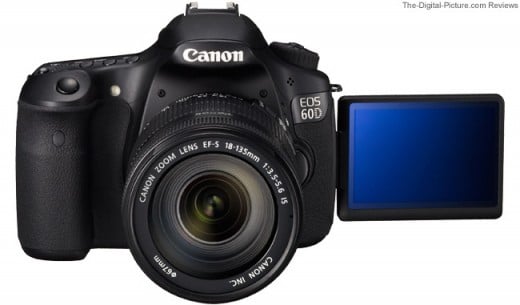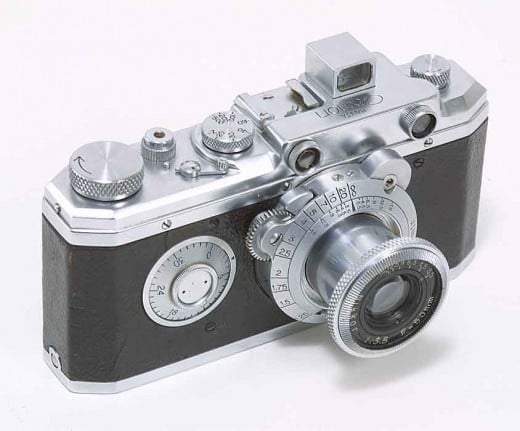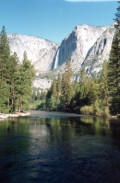- HubPages»
- Technology»
- Consumer Electronics & Personal Gadgets»
- Portable Electronics»
- Digital Cameras
Canon EOS 60D - A Professional Quality Mid-Range DSLR
Who is Canon?
Precision Optical Instruments Laboratory was founded in 1934 as a Japanese optics company.
Canon also introduced a number of other cameras over the years notably:
- Canon 7, a rangefinder
- Canon Pellix, an single lens reflex (SLR) that measured light through the lens (a first)
- Canon F-1, a fully professional SLR
- Canon AE-1, the first SLR with a microcomputer
- Canon EOS, (Electro-Optical System) the first SLR with autofocus
Canon also makes printers, scanners, binoculars, video recorders and, of course, digital cameras.


Kwanon
One of Precision Optical Instruments Laboratory first products was the Kwanon 35mm camera. The Kwanon was the first ever 35 mm camera with a focal plane shutter. Up to then 35mm cameras, like all other cameras, had the shutter built in to the lens assembly.
The camera was named 'Kwanon' by Goro Yoshida after the Buddhist bodhisattva Guan Yin. The Japanese name for this deity is Kannon.
The camera was very successful in Japan and it's name later became the name of the company; Canon.
You can see an image of the Kwanon at right picture two.
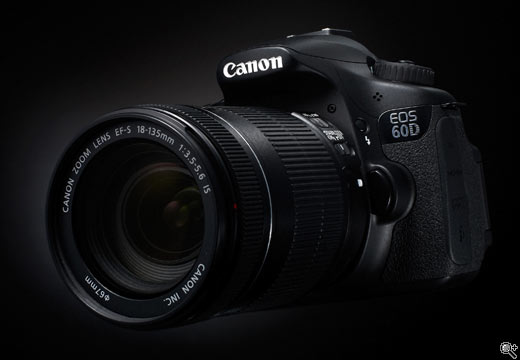
Canon EOS 60D
The 60D, originally positioned as an upgrade to the 50D, is a smaller camera with a swivel screen and plastic body shell. It combines the 18Mega-pixel CMOS sensor and one mega-pixel LCD screen. The screen is the same as that found on the EOS 55D (Rebel T2i) except that the Rebel's screen is fixed while this one is hinged to allow viewing from almost any angle. The camera also has the auto-focus system originally found on the 50D. Additionally, the 60D is not just a still camera, but a motion capture camera as well and a very good one at that.
The Nikon D7000, the 60D's direct competitor, is also a motion capture and still camera.

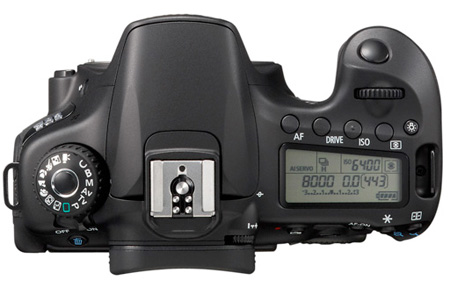
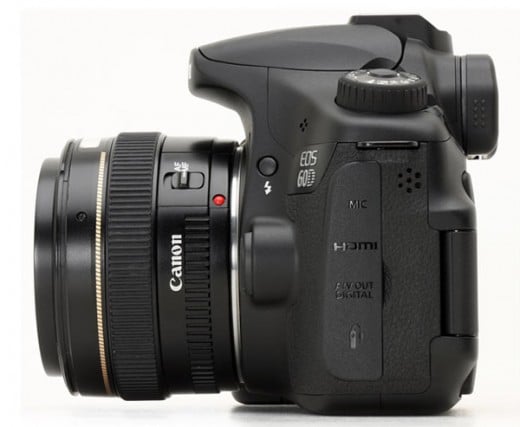
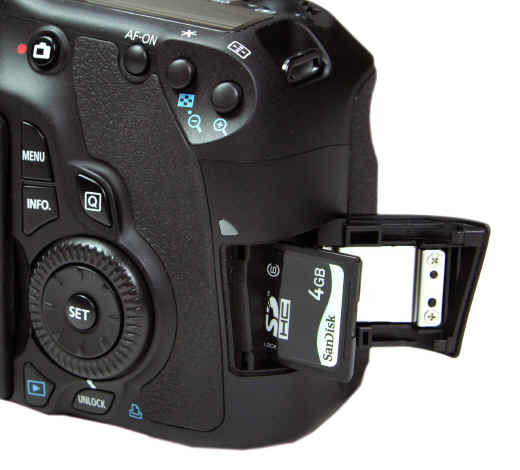
Canon EOS 60D Specifics
With an 18 Megapixel APS-C sensor, the EOS 60D offers high levels of detail and a high degree of magnification. With the eighteen megapixel sensor the camera can capture printable images to near poster size (11" x 18") without any noticeable pixelation.
The EOS 60D uses Canon’s DIGIC 4 technology for rapid image processing. The combined speed of the APS-C sensor and the DIGIC 4 software translates to five frames per second shooting speed in burst mode.
The standard ISO range is 100 to 6400, however the embedded DIGIC 4 software allows the photographer to push the upper ISO limit to 12,800. Focusing is accomplished with a 9-point, all cross-type autofocus (AF) system. The center point of the focal plane is utilized as an extra-sensitive point for lenses faster than f/2.8. This allows a shallower depth-of-field when desired.
The EOS 60D also features the Canon iFCL metering system, first introduced with the EOS 7D. The Integrated Speedlite transmitter also provides in-camera control of multiple EX flash units for more creative lighting.
Shoot from all angles
The included LCD panel allows for otherwise awkward or impossible shooting angles. The display can tilt an pivot to provide a preview of scene selection at almost any concievable angle. The LCD is also designed to serve as a view finder in that Live View information is displayed there as well as in the traditional viewfinder.
Empowering creativity
The Canon EOS 60D has built in scene and mood settings that allow the photographer to add creative touches to images without worrying about changing settings. Ambiance can be added by programming the camera to shoot by light and/or scene type. This works with with portrait, landscape, close-up, sport, night snapshot or creative AUTO modes. Additional effects can be effected by shooting with the camera's Basic + enhancements. These settings include daylight, cloudy or sunset. Pre-set picture styles also include Vivid, Soft, Warm or Monochrome.
File formats supported are RAW and JPEG.
In Camera Modification
The Canon EOS 60D was also designed to allow photographers to make post photo changes with its built-in creative filters. Filters include grainy, black and white, soft focus, toy camera effect, pin-hole, and miniature effects.
Full HD video with complete control
The Canon EOS 60D can also record motion capture at 1920 x1080p HD video. Frame rates include thirty frames per second (30fp/s), twenty-five (25fp/s) and twenty-four (24fp/s). The 60D can also capture video at 720p video at sixty (60fp/s) and fifty (50fp/s).
Movie crop allows captured video to be cropped down to the standard definition television format of 640x480.
Any any of the above mentioned video recording modes, the 60D allows full manual control of the process. This allows the photographer to apply their own blend of exposure and focus setting controls. An optional external stereo microphone terminal or the camera's built-in monaural microphone can be employed to capture audio. The EOS 60D allows the photographer to adjust audio input while recording.
The camera also has microHD output for display to HDTV or other viewing devices and supports USB 2.0. It also supports RC-1, RC-5 and RC-6 remote controls (also optional).
For a full list of specifics see the table below.
Canon EOS 60D
| |
|---|---|
Tyle
| Digital Single Lens Reflex
|
Lens Mount
| Olympys Proprietary System
|
Effective Pixels
| 18 million (5,184 x 3,456 pixels)
|
Optical Sensor Technology
| High Speed CMOS
|
Optical zoom
| 3X
|
Lens Type
| zoom
|
Optical Sensor Size
| 13.0 x 17.3 mm
|
Included Flash Type
| pop up
|
Viewfinder
| Optiacal pentaprism
|
Display Size
| 3 inches
|
Light Sensitivity
| 100 ~ 6,400 (push of 12,800)
|
Shutter Speeds
| 1 ~ 1/8000 second plus bulb
|
In Camera Effects
| Soft Focus, Grainy Black & White
|
Toy Camera effect, Miniature effect
| |
Image types
| JPEG RAW
|
Shooting Modes
| Frame Movie Mode
|
Width
| 5.7 inches (145mm)
|
Depth
| 3.1 inches (79mm)
|
Height
| 3.1 inches (106mm)
|
Weight
| 1.72 pounds, 779g
|
Coda
With a retail price of an even thousand dollars for the body only, the Canon EOS 60D is a direct competitor to the Nikon D7000 and the Pentax K-5.
It has a slightly better image resolution that the Nikon, but is slightly heavier and larger. Oddly, the camera still uses optical through the lens view-finding when almost every other manufacturer has moved on to digital LCD. This and the swivel out LCD screen are what add to the camera's weight.
Disclaimer
The author was not compensated in any way, monetarily, with discounts, or freebies by any of the companies mentioned.
Though the author does make a small profit for the word count of this article none of that comes directly from the manufacturers mentioned. The author also stands to make a small profit from advertising attached to this article.
The author has no control over either the advertising or the contents of those ads.

